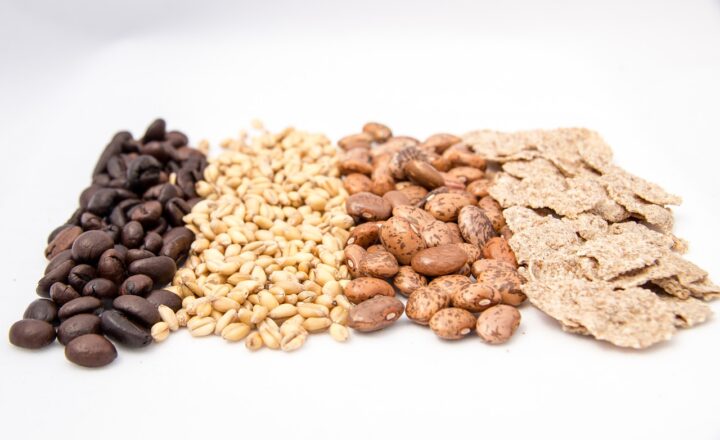How to Make Healthy Eating a Habit with Meal Planning
November 11, 2024

In today’s fast-paced world, healthy eating can often feel overwhelming. With the convenience of fast food and ready-meals, making nutritious choices seems daunting. However, adopting healthy eating habits can be simplified through effective meal planning. Meal planning not only saves you time and money but also empowers you to make healthier choices consistently.
1. Understanding the Importance of Meal Planning
Meal planning is the process of preparing meals in advance to ensure you have healthy options available throughout the week. It acts as a roadmap for your meals and helps eliminate the need for last-minute unhealthy choices. Here are some compelling reasons to embrace meal planning:
- Saves Time: Planning your meals in advance saves time on daily cooking and grocery shopping. You can dedicate a few hours once a week to meal prep and free up time during busy weekdays.
- Reduces Food Waste: Creating a shopping list based on your meal plans helps minimize over-purchasing and food spoilage, leading to less wasted food and money.
- Encourages Healthier Choices: With a plan in place, you can consciously choose nutritious ingredients and balanced meals instead of succumbing to unhealthy cravings when you’re hungry and unprepared.
- Saves Money: Buying groceries with a plan reduces impulsive purchases, helping you stick to your budget and save money in the long run.
Making healthy eating a habit starts with understanding the significant advantages of meal planning.
2. How to Get Started with Meal Planning
Creating a meal plan may seem intimidating at first, but with a systematic approach, you can make it a part of your routine. Here’s a step-by-step guide to get started:
Step 1: Set Your Goals
Before diving into meal planning, it’s essential to define your health goals. Are you aiming to lose weight, increase energy levels, or simply adopt a healthier lifestyle? Your goals will influence the types of meals you plan.
Step 2: Choose a Meal Planning Method
Different planning methods suit different lifestyles. Here are a few common approaches:
- Weekly Menu: Outline meals for each day of the week, including breakfast, lunch, dinner, and snacks.
- Batch Cooking: Prepare large quantities of several dishes and store them for quick access throughout the week.
- Flexible Planning: Create a list of healthy recipes and allow yourself flexibility to choose meals based on what you feel like eating on a given day.
Choose a method that aligns with your lifestyle and preferences to make planning enjoyable rather than burdensome.
Step 3: Create a Menu
Look at your schedule for the week and choose meals that will fit in with your commitments. When creating your menu, consider the following:
- Nutrition Balance: Aim to include a variety of fruits, vegetables, whole grains, lean proteins, and healthy fats in your meals.
- Seasonal Ingredients: Incorporate seasonal produce that is fresh and flavorful, often at a lower price point.
- Leftovers: Plan for meals that can be easily reheated or repurposed later in the week to save time and reduce waste.
Once you finalize your menu, it’s time to make a comprehensive grocery list based on the ingredients you’ll need.
Step 4: Grocery Shopping
Head to the store with your list in hand to avoid impulse purchases. Keeping your pantry stocked with staples such as grains, legumes, and spices will also help you navigate meal prepping more smoothly. Aim for a mix of fresh produce and frozen options to ensure you have healthy ingredients available even when fresh items run out.
Step 5: Meal Prep
Dedicate some time (usually a few hours on a weekend) to cook and prep your meals for the week. This could include:
- Chopping vegetables: Prepare veggies for salads, snacks, or stir-fries in advance to have them ready to go.
- Cooking grains and proteins: Cook a batch of brown rice, quinoa, beans, or grilled chicken to build meals easily throughout the week.
- Pre-assembly of meals: Assemble meal containers for grab-and-go lunches or quickly reheatable dinners.
Having pre-prepared meals means you’re less likely to order takeout and more likely to stick to your meal plan.
3. Tips for Sticking to Your Meal Plan
Creating a meal plan is one thing, but sticking to it is where many people struggle. Here are some practical tips to help you stay consistent:
Be Flexible
Although planning is essential, life is unpredictable. Allow yourself some flexibility in your meals. If you’re not in the mood for a planned dish, swap it for another healthy option instead of abandoning the entire plan.
Keep Your Meals Interesting
Boredom with meals can lead to cravings for unhealthy alternatives. Experiment with new recipes, flavors, and cuisines each week to keep your meals exciting and enjoyable. Keeping a food journal can also help you track what you love and what you want to try next.
Involve Your Family
If you’re cooking for family members, involve them in the meal planning process. Allowing everyone to contribute ideas can lead to meals that cater to individual tastes, making mealtime more enjoyable and less of a chore.
Stay Consistent with Grocery Shopping
Keep a consistent shopping schedule to ensure you always have the necessary ingredients on hand. Setting a day each week to shop allows you to build a routine that reinforces your commitment to healthy eating.
4. Overcoming Common Meal Planning Challenges
Even the most committed meal planners face challenges. Often, people struggle with time management and variety. Here are some common hurdles and how to overcome them:
Time Constraints
If your schedule is packed, it can be tempting to skip meal prep. Try preparing meals during quieter times, or look for quick and healthy recipes that take minimal time to cook, such as stir-fries or crockpot meals that cook themselves while you go about your day.
Lack of Inspiration
Running out of ideas can make meal planning tedious. Explore resources like cooking blogs, meal prep videos, and apps that provide creative recipes tailored to your dietary preferences. Additionally, involve family members to brainstorm ideas or themes for each night.
Eating Out Too Often
Social events can disrupt your meal plan. Try finding restaurant options that align with your dietary goals or suggesting restaurants where you know you can make healthy choices. You can also get creative by making healthy versions of your favorite restaurant dishes at home.
5. Conclusion: Making Healthy Eating a Lifestyle
Incorporating meal planning into your routine can fundamentally change your relationship with food, empowering you to make healthier choices with ease. By taking the time to plan your meals, you can save money, reduce stress, and improve your overall health. Meal planning can be a delightful and liberating experience when paired with creativity and an open mindset. Start your meal planning journey today and realize the transformative power of planning ahead!
Embrace meal planning as a tool to help you not just eat healthily but enjoyably as well. As you become more accustomed to it, you will find that preparing nutritious meals can be rewarding and satisfying. With practice and patience, healthy eating can become an effortless habit that enhances your life.








